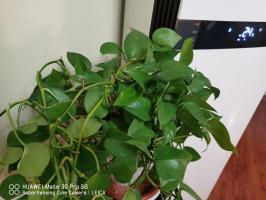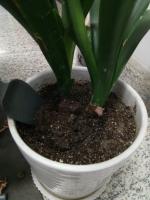What is the Principle Water Conducting Plant Tissue?
Plants have evolved a vast network of vascular tissues to transport water, nutrients, and other important substances throughout their tissues. The vascular system of plants consists of two main types of tissues- the xylem and the phloem.
Xylem Tissue
The xylem tissue is the principle water conducting tissue in plants. The primary function of the xylem is to transport water and minerals from the roots to the leaves of the plant. The xylem is composed of several cell types, including tracheids and vessel elements. The tracheids are small, elongated cells with thin walls and are found in all seedless vascular plants and gymnosperms. The vessel elements, on the other hand, are larger cells with thinner walls commonly found in angiosperms. These cells are arranged end to end forming long tubes, which are interconnected to form the water conducting channel in the xylem.
How Xylem Tissue Works
The xylem tissue works based on the principle of transpiration, which is the process of water movement from the soil, through the roots, and into the xylem vessels in the stem. Once water enters the xylem, it is transported upwards and reaches the leaves due to the cohesive forces and adhesion forces that hold water molecules together. The water evaporates from the leaves through tiny pores called stomata, creating a negative pressure that pulls more water up through the xylem vessels.
Phloem Tissue
Unlike xylem tissue, which carries water and minerals upwardly, phloem tissue transports the products of photosynthesis from the leaves to other parts of the plant. The phloem tissue is composed of sieve tube elements and companion cells. The sieve tube elements are long, thin cells that form a continuous tube, while the companion cells provide metabolic support to the sieve tube elements. The movement of organic compounds through the phloem tissue is called translocation, a process that is powered by the pressure gradient established by the loading and unloading of sugars from the phloem.
Conclusion
The xylem and phloem tissues play a critical role in plant growth and survival. The xylem tissue provides a mechanism for the upward transport of water and minerals required for photosynthesis, while the phloem tissue facilitates the transport of the products of photosynthesis to other parts of the plant. Understanding the principle water conducting plant tissue is crucial to maintaining healthy plants and maximizing crop yields.

 how many times do yo...
how many times do yo... how many planted tre...
how many planted tre... how many pine trees ...
how many pine trees ... how many pecan trees...
how many pecan trees... how many plants comp...
how many plants comp... how many plants can ...
how many plants can ... how many plants and ...
how many plants and ... how many pepper plan...
how many pepper plan...
































